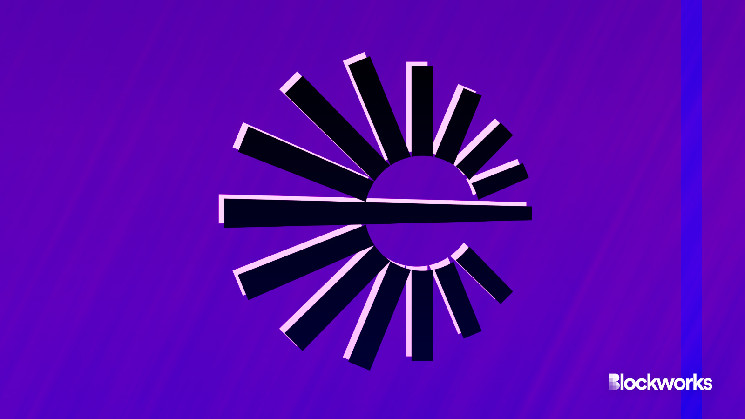Shared sequencer solution Espresso will partner with Ethereum layer-2 scaling solution Polygon Labs to develop AggLayer (aggregation layer) in order to solve rollup interoperability.
AggLayer was first introduced in January. It is designed to solve the fragmented liquidity problem in the blockchain space by centering scaling UX on one single, unified aggregation layer. AggLayer is similar to Risc Zero’s “Type 0” zkEVM, Zeth, a general-purpose programming language that can be EVM equivalent.
Both solutions are designed to enable transaction verification across multiple chains. In the case of AggLayer, the protocol uses a process called “proof aggregation” to ensure that transactions across its ecosystems are valid.
Read more: Polygon zkEVM prover reaches Type 1 status
According to Polygon Labs documents, all transactions will be guaranteed on AggLayer without having to depend on a third-party bridging solution.
In the long term, Polygon hopes that when a rollup creates a message for a destination chain, it will also create a validity proof that verifies its accuracy instantaneously.
That’s one problem that Anurag Arjun, the founder of Avail, and his team are hoping to resolve.
Arjun notes that although cross-chain communication is great for users who belong to the same ecosystem, once they leave the ecosystem, they are likely to receive a “subpar experience.”
Read more: Avail raises $27M, readies entrance into modular narrative
“If you want to really bring these rollups together, you need two things primarily,” Arjun told Blockworks. “You need a proof of ordering — the transaction data ordering — in the sense that if a rollup has committed to a certain order of the transactions, you need some guarantees for that. That is what Avail validity proof [data availability sampling] provides. And then you need the execution proofs, which are provided by the rollup themselves.”
The distinction that needs to be made is that proof aggregation itself is not enough, and transaction ordering of these rollups is equally important, Arjun said.
“So when you combine ordering guarantees with the actual execution proof, then that is why we are able to do this orchestration — connecting these rollups,” he explained.
However, the state of proving at this point in time is not yet at the speed of real-time verification, and all interdependent rollups must be created, aggregated and verified jointly before they are settled on Ethereum.
This is where Espresso comes in. Espresso will be the coordinator that unifies the interdependent rollups before they are settled onto Ethereum.
Ben Fisch, the CEO of Espresso Labs described the collaboration efforts between Espresso and Polygon as pivotal for both ecosystems.
“Our respective teams have been thinking deeply about layer-2 interoperability over the last year — it’s amazing to see our solutions converge in such a synergistic way. Polygon’s AggLayer and Espresso’s coordination layer are perfect complements,” Fisch told Blockworks.
Marc Boiron, CEO of Polygon Labs, shares this sentiment. He told Blockworks he believes this new partnership will synergistically elevate interoperability within Ethereum’s layer-2 environment.
“While the AggLayer guarantees the integrity of data exchange among Ethereum layer-2s, Espresso’s sequencing marketplace optimizes this process by enabling efficient coordination and fast transaction finalization across multiple Ethereum layer-2s,” Boiron said. “This integrated approach markedly enhances the fluidity and user experience of transactions within Ethereum’s layer-2 network.”
Espresso’s latest partnership with Polygon on AggLayer shows the progress of the modular approach to scaling Ethereum, one that stands in contrast to what, for instance, the Nil Foundation is working to achieve with sharded layer-2s.
Misha Komarov, the founder of Nil Foundation, previously told Blockworks that it aims to take a protocol-level approach to interoperability by embedding the sequencer into the protocol to make it capable of sending transactions between different shards.
Read more: New Ethereum rollup takes a zero-knowledge approach to sharding
“So basically, that means it keeps them all composable, it keeps them all together, it keeps the liquidity unified. It’s like no separation, no Balkanization of ETH is happening, in fact,” Komarov said.
In simpler terms, the two approaches can be viewed as vertical versus horizontal scaling, though they combined features of both to varying degrees.
“ZkSync and Polygon pursue vertical scaling — layer-2s and layer-3s — [while] on our side, we pursue horizontal scaling,” he said. “We kind of say, okay, modularity can be done in a better way. It might be not even the modularity anymore.”
Whichever approach ultimately prevails, there is a widespread recognition that the fragmentation of UX and liquidity that currently prevails across many Ethereum scaling efforts is an impediment to adoption.
“This whole industry is a competition of ideas,” Komarov adds. “A competition of who gets the better idea and the first one who gets there — the implementation of it — captures the market.”
Macauley Peterson contributed reporting.
Read the full article here









